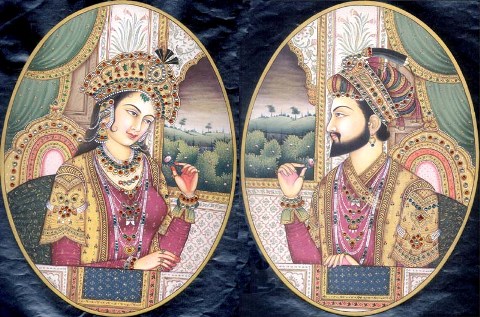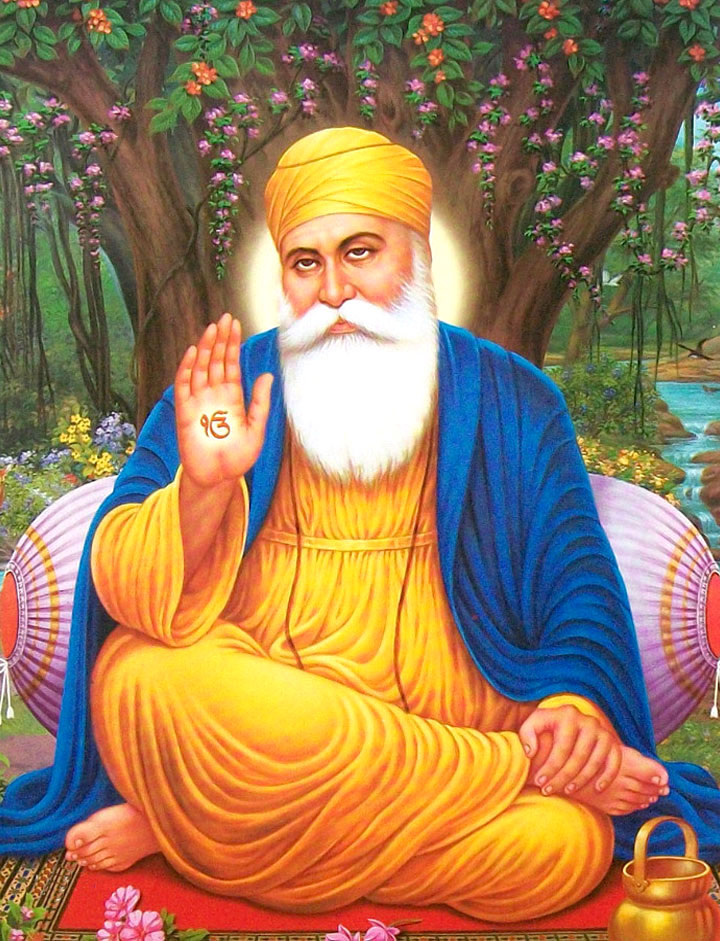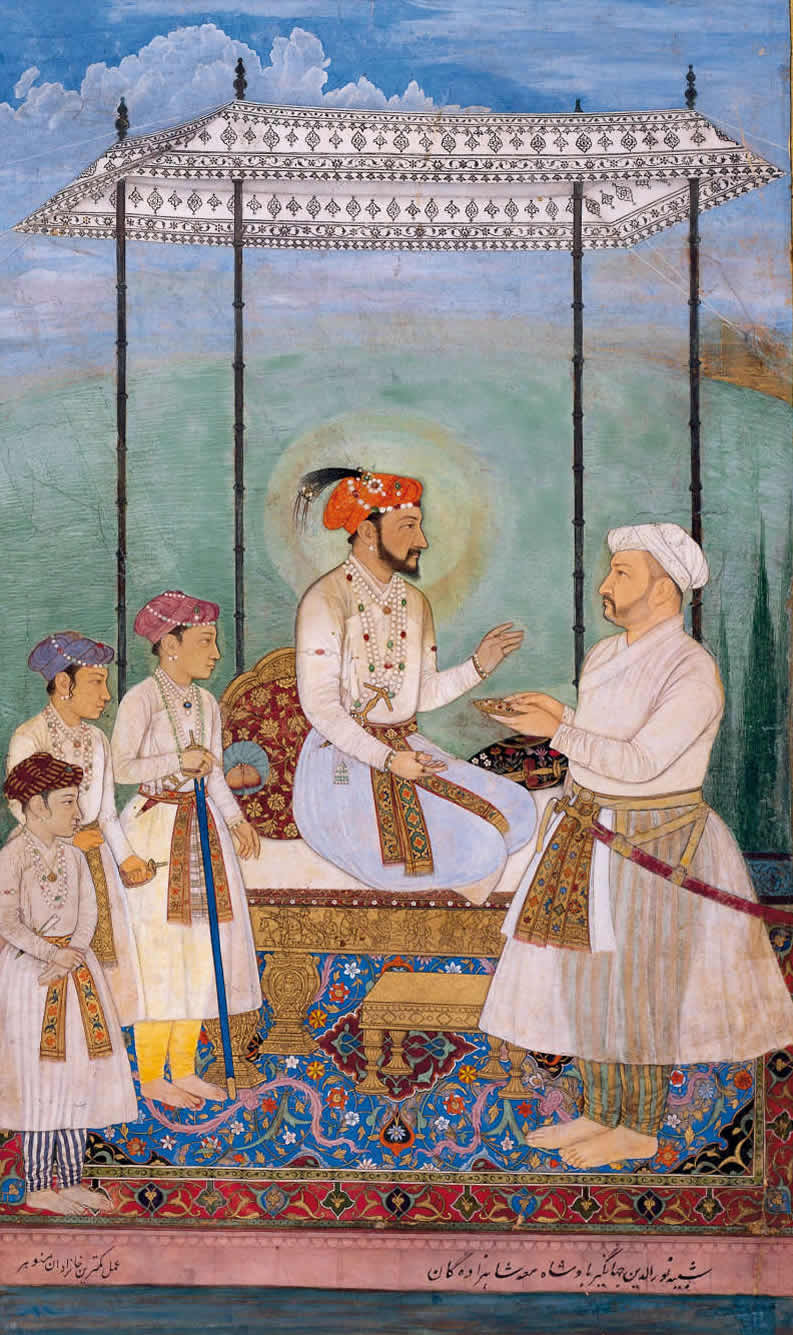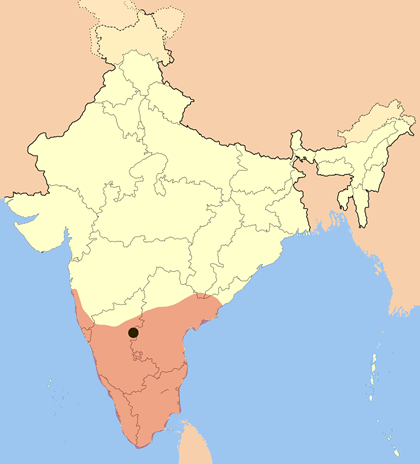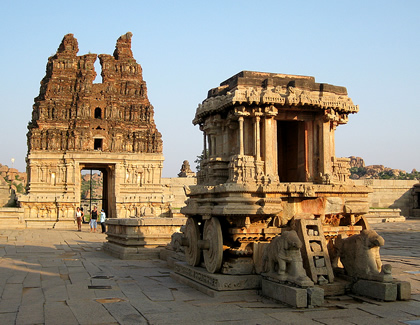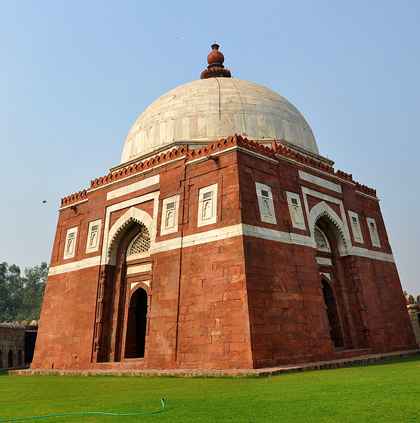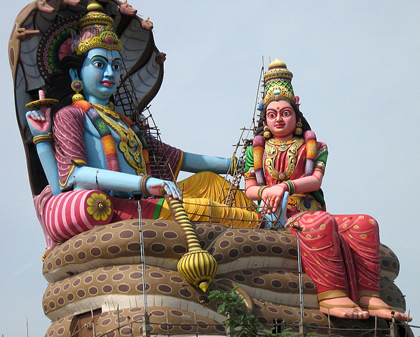 |
| Shivaji Maharaj |
Shivaji was born on February 19, 1627, in the hill fort of Shivaneri. He is best remembered for his valor and relentless struggle against the Mughal emperor Aurangzeb (1618–1707).
The father of Shivaji was Shahji, a jagirdar (fief holder) of the sultan of Bijapur. Jijabai, his mother, inspired Shivaji by telling stories of heroes from
Hindu mythologies. She inculcated a spirit of bravery and self-determination in him.
Shahji sent his son to manage his land tenures around Pune region, and Dadaji Kondadeb was in charge of teaching young Shivaji the art of administration and warfare. Shivaji’s personality grew among the rugged mountains in the Pune region as he matured with the care of his mother, his apprenticeship under Dadaji, and an indomitable spirit of
independence.
First Military Successes Shivaji’s first military endeavor occurred at the age of 16, when he seized the fort of Torana. The following year two more forts, Kondana and Raigarh, were taken by his army. The conquest of Javli kingdom in 1656 made Shivaji dominant in Mavala region, and the path was open for further conquests in the Konkan area.
Shivaji also came into conflict with the Mughals when he made forays into Ahmadnagar, but he made peace with them in 1657. By 1659, he seized more forts along the Konkan coast and became master of Kalyan and Bhiwandi. The Bijapur sultan Adil Shah grew alarmed at Shivaji’s growing prowess.
The respite from the Mughals allowed the sultan to focus on Shivaji, so he sent General Afzal Khan with 10,000 troops to capture him. The two leaders agreed to meet each other unarmed, but before Afzal could take out his dagger, Shivaji finished him with a hidden iron finger grip containing tiger claws.
Afterward, the Bijapur army was routed, and Sivaji’s exploits made him a legendary figure. In 1660, Shivaji had to face the Mughal army of Deccan viceroy Shaista Khan, who was dispatched by Aurangzeb, anxious at the rapid rise of Shivaji. Pune and north Konkan came under Shaista Khan. Bijapur launched an attack under Sidi Salabat and took away Panhala.
An agreement was signed between Shivaji and the sultan of Bijapur in 1662, by which Shivaji agreed not to attack Bijapur in exchange for control over northwestern part of the kingdom. The following year, Shivaji made a daring attack on Shaista Khan’s camp at Pune and the latter fled in disgrace. The important Mughal port of Surat was attacked in 1664, and Shivaji returned with treasure worth a fortune.
Aurangzeb wanted to subdue Shivaji and sent his capable Hindu general Mirza Raja Jai Singh with an army of 12,000. Jai Singh made careful preparations to influence anti-Shivaji forces and then struck at the fort of Purandar, where Shivaji’s family was staying.
It was besieged and Shivaji had to sign the Treaty of Purandar in 1665 after lengthy negotiations. Shivaji retained 12 forts out of his 35 and agreed to remain loyal to Aurangzeb. Jai Singh’s plan for subduing Bijapur failed, and he persuaded Shivaji to meet the emperor in person at Agra.
He was put under house arrest but managed to escape. Another treaty was signed, but it did not stop the offensive of Shivaji against the Mughals, and in 1670 he launched another attack against their territories. Purandar and some other forts were recaptured by him. Surat was once again attacked.
Self-declared King 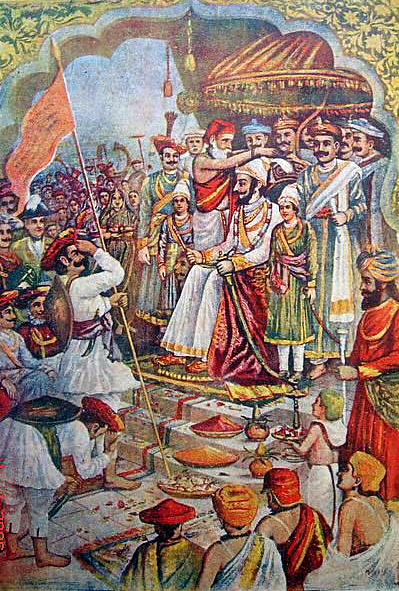 |
| Shivaji coronation |
On June 6, 1674, Shivaji declared himself as a sovereign king in a ceremony at Raigarh, in which he gave himself the title of Chhatrapati (sovereign king). He started the Raj Shaka (royal era) and issued shivarai hun (gold coin) on this occasion. An independent Maratha state became an accomplished fact in the face of the mighty Mughals and ever opposing hegemony of Bijapur kingdom.
The Marathas looked him as father of the nation and the rise of Maratha nationalism owes a great deal to Shivaji, who rose from a minor chieftain to king of an independent kingdom. At the time of the struggle for freedom against
British colonial rule, he was taken as a symbol of nationalism in the nationalist historiography.
Shivaji did not make an jadwal of fighting for the Hindu cause against forces of Islam. He was a brave soldier who prized his independence. His waging of war against external domination was a yearning for freedom against subjugation.
After 1674, Shivaji launched a spate of offensives against Mughals in Berar and Khandesh. He besieged the forts at Vellore and Jinji. As a sovereign ruler, he signed a treaty with Golconda Sultanate. He also signed a friendship treaty with the Kutubshah of Golconda Sultanate.
Administration Amid his conquests and relentless guerrilla warfare against enemies, Shivaji laid the foundation of a sound administrative system. The ashtapradhans (eight ministers) were ministers holding different portfolios.
The ieshwa was the most important one, having charge of finance and general administration. The sar-i-naubat was the commander in chief, and the majumdar was the accountant. The dabir looked after foreign powers and waqe navis managed the intelligence department.
The departments of justice and charity were entrusted with nyayadhish and panditrao. He was one of the few rulers who had a developed navy, and he enacted improvements to the organization and functioning of the army. The soldiers were given strict instructions for not harassing women and noncombatants.
Salary was given in cash and the chiefs received land revenue grants. His numerous forts were well managed. A tax called chauth (one-fourth of land revenue) was levied in neighboring territories as a kind of protection money against Maratha raids. Shivaji adopted a policy of religious toleration and employed Muslims in the army.
His admirals in the navy were Muslims. Shivaji was one of the greatest statesmen and generals, symbolizing the Maratha will against the imperial rule of the Mughals. He died on April 3, 1680, from high fever and was succeeded by his son, Raje Sambhaji (1657–89).



